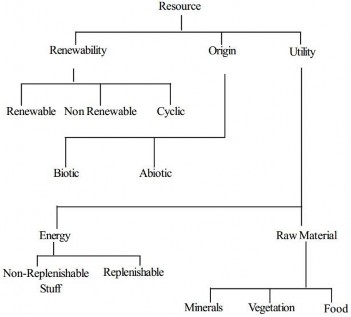2. Classification of Resources
Resources can be classified in several ways: one the bases of (i) renewability, (ii) origin and (iii) utility. The objective of classification would primarily decide how we put a resource under a particular category.

Figure 1: Classification of ResourcesFigure 2: Global share of recoverable coal reservesTable 1 – Distribution of coal across continentsTable 2: Estimations for different types of coal based on formationTable 3: Gondwana coalfields3.2. PetroleumTable 4: Tertiary coalfieldsFigure 5: Worldwide Oil DistributionFigure 6: Share of Organization of the Petroleum Exporting Countries (OPEC) in world crude oil reserves 20123.3. Natural GasFigure 7: Countries with largest proved natural gas reservesFigure 8: World Shale GasTable 5: List of top 10 countries by recoverable shale gasFigure 9: Major coalbed Methane reserves3.4. India – Petroleum – Petroleum and Natural GasTable 6: Reserves of Crude Oil in India (2013)Table 7: Reserves of Natural Gas in India (2013)Figure 10: sedimentary Basin of IndiaFigure 11: Major Oil and Gas discoveries after 2000Table 8: CBM reserves of IndiaFigure 12: Shale oil and gas basins of IndiaFigure 13: Potential Gas Hydrate reserves of India3.5. NuclearFigure 14: Known Recoverable Resources of Uranium 2011Figure 15: Top 10 Uranium producing countries (2010)Figure 17: Uranium occurrence and production centres in IndiaFigure 18: Thorium deposits, India[2] Reserves are identified quantities of “in-place” minerals that are considered recoverable
